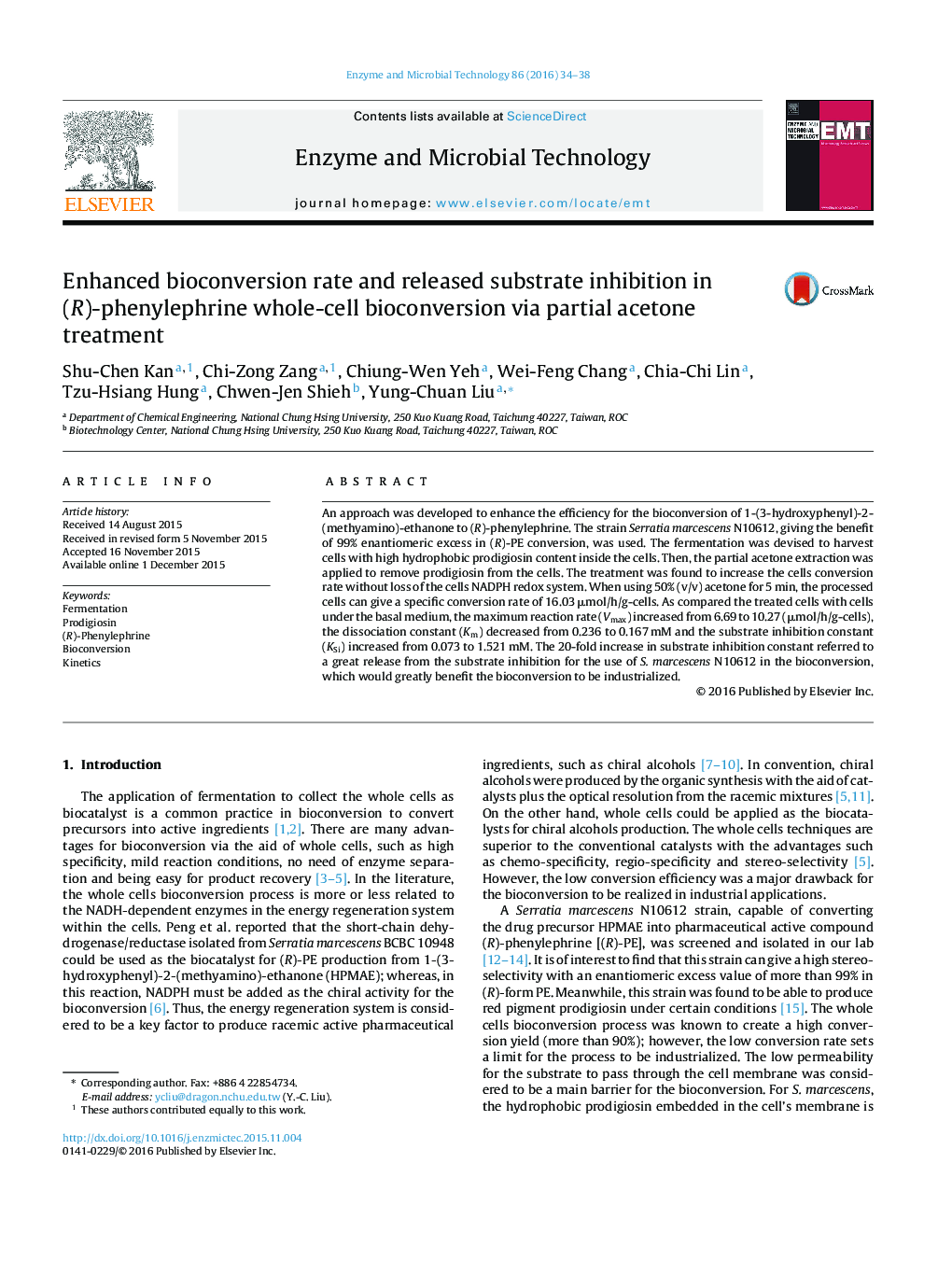| Article ID | Journal | Published Year | Pages | File Type |
|---|---|---|---|---|
| 16795 | Enzyme and Microbial Technology | 2016 | 5 Pages |
•The screened Serratia marcescens N10612 gave a 99% e. e. in (R)-PE conversion.•The partial acetone treated cells enhanced the bioconversion rate.•The treated cells proved to retain the cells NADPH redox system.•Acetone content of 50% was the key factor for this process.•The partial acetone-treated cells showed a great release in the substrate inhibition.
An approach was developed to enhance the efficiency for the bioconversion of 1-(3-hydroxyphenyl)-2-(methyamino)-ethanone to (R)-phenylephrine. The strain Serratia marcescens N10612, giving the benefit of 99% enantiomeric excess in (R)-PE conversion, was used. The fermentation was devised to harvest cells with high hydrophobic prodigiosin content inside the cells. Then, the partial acetone extraction was applied to remove prodigiosin from the cells. The treatment was found to increase the cells conversion rate without loss of the cells NADPH redox system. When using 50% (v/v) acetone for 5 min, the processed cells can give a specific conversion rate of 16.03 μmol/h/g-cells. As compared the treated cells with cells under the basal medium, the maximum reaction rate (Vmax) increased from 6.69 to 10.27 (μmol/h/g-cells), the dissociation constant (Km) decreased from 0.236 to 0.167 mM and the substrate inhibition constant (KSi) increased from 0.073 to 1.521 mM. The 20-fold increase in substrate inhibition constant referred to a great release from the substrate inhibition for the use of S. marcescens N10612 in the bioconversion, which would greatly benefit the bioconversion to be industrialized.
